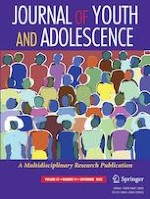06-07-2022 | Empirical Research
Developing Sexual Self-Efficacy Beliefs During Adolescence: Do Health Teachers Really Matter?
Gepubliceerd in: Journal of Youth and Adolescence | Uitgave 11/2022
Log in om toegang te krijgenAbstract
Teacher attitudes and instructional strategies impact success of human sexuality programs. Limited prior research has examined the relations of teachers’ attitudes and instruction to the development of adolescents’ sexual self-efficacy beliefs. This study examined how adolescents’ perceptions of their health teachers (i.e., teacher value of content, teacher affinity, teacher caring for students) predict changes in efficacy beliefs related to HIV/STD and pregnancy prevention, and if perceptions of mastery goal structure predicted adaptive efficacy beliefs. Data were collected in 4 Midwestern/Appalachian high schools in health class where the delivery of a 14-lesson sexual health curriculum occurred. Participants included 561 students (50.4% 9th graders, 43.5% female, 56.3% White, 53.7% did not have a current romantic partner, and 59.7% had previously not engaged in sexual activity). The findings indicate students’ perceptions of teachers valuing the content predicted perceptions of mastery goal structure for all sexual self-efficacy beliefs: learning efficacy, condom negotiation efficacy, refusal self-efficacy, and situational self-efficacy. Students who perceive a mastery goal structure in health class, and who feel their teachers value learning about HIV/STD and pregnancy prevention, are likely to experience positive adaptive self-efficacy beliefs related to sexual health, ultimately leading to behaviors indicative of decreased STDs among teenagers and safe sexual practices, such as abstinence, the use of a condom, and saying “no” to having sex.
